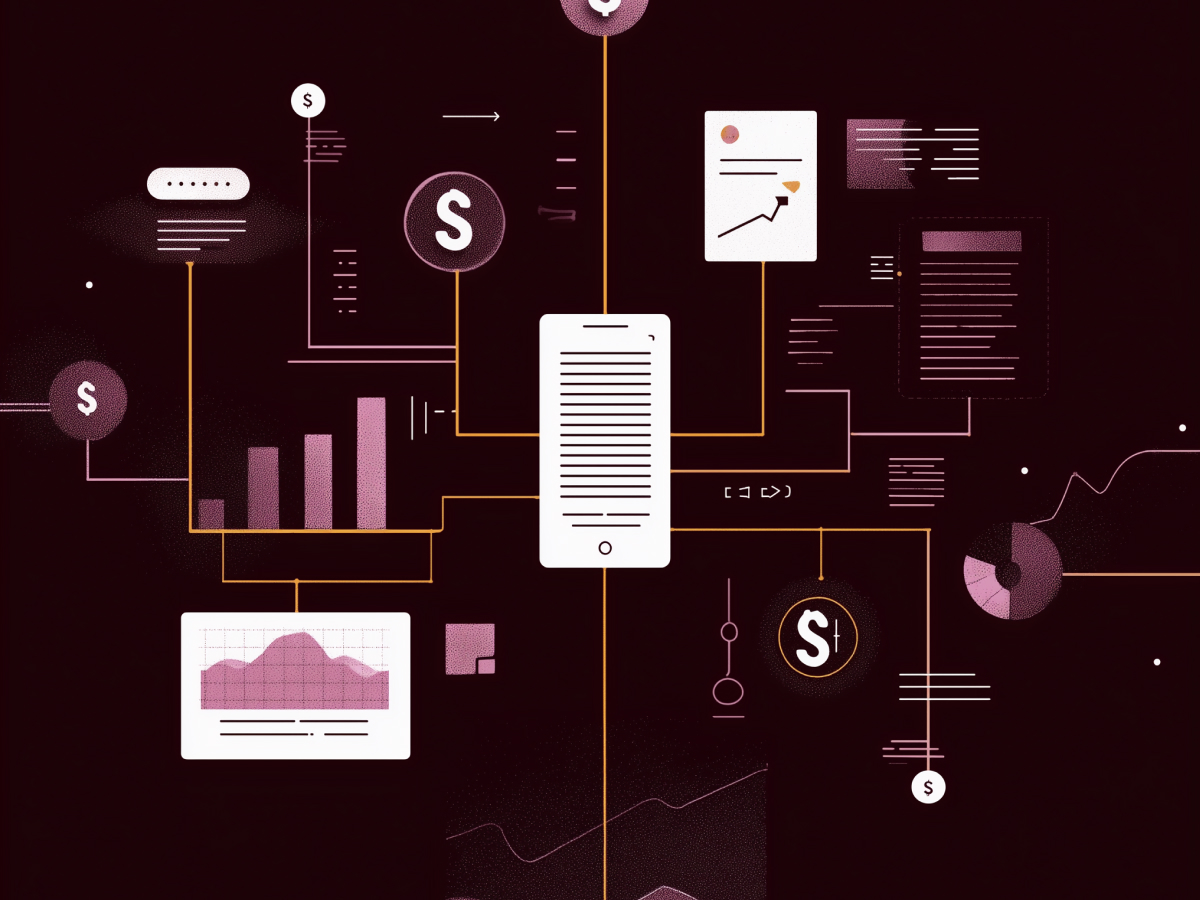Here’s why your user research strategy might be failing
The real reason companies are slashing user research
Many companies have cut or completely removed their user research departments, driven by economic constraints and budget reductions. The core issue stems from a failure to tie research directly to business metrics that demonstrate measurable ROI.
Research often becomes a siloed activity, disconnected from the company’s primary financial goals. When this happens, it’s seen as non-essential during cost-cutting periods, leaving businesses without key insights that could drive growth.
In the current business climate, leaders need clear, tangible connections between research and outcomes like customer acquisition, retention, and increased sales.
Without that link, research gets treated as a cost center rather than a profit-generating asset. This is a critical misstep, especially when research directly aligned with business goals can greatly impact long-term success.
How conversion design helps your business thrive during tough times
Conversion Design serves as a solution for companies looking to survive—and thrive—during economic challenges. Through integrating research with value-driven initiatives, businesses can better understand their customers and convert these insights into business value.
Focusing on measurable results is key, helping organizations retain their research teams and making sure every action is contributing directly to value creation.
Conversion Design is centered on aligning research with customer understanding, driving product optimizations that are tied to critical business outcomes.
Companies that use this approach tend to outperform competitors who make decisions based on assumptions rather than data-backed insights. The result is a streamlined, customer-centric strategy that promotes sustainable growth, even in volatile markets.
Turn curiosity into business growth with smart research
How structured curiosity generates impactful insights
Curiosity, while essential to research, must be channeled effectively to produce actionable insights. Random exploration without a focus on business goals won’t deliver value. This is where the “Understand” phase of Conversion Design is key.
Through focusing on the customer’s core issues, businesses can turn curiosity into purposeful research, leading to business decisions that make a difference.
In this phase, researchers do more than exploration; they align their curiosity with company objectives. Organizations can use this to discover areas where addressing user pain points leads directly to business growth.
The process typically involves defining which issues matter most to customers and how solving them can create measurable improvements, whether in user experience, conversions, or overall profitability.
Want to know what customers really want? Start here
Identifying the top tasks customers want to accomplish with your product or service is a foundational step in effective research. These are the core actions users attempt when engaging with a product, and understanding them helps prioritize where to invest time and resources.
This process starts by using the product yourself or observing how others interact with it. During this, you ask key questions:
- Where do users make mistakes?
- Do they hesitate at certain points?
- Are design patterns or mental models misaligned with user expectations?
- Is any part of the user journey unnecessarily slow?
Documenting these observations uncovers the most critical customer tasks, letting teams focus on what truly matters—making sure research is both exploratory and connected to real user pain points that, when solved, drive business success.
Asking the right research question can transform your business
A well-constructed research question is the starting point for impactful insights. It defines the purpose of your research and directly ties it to a business objective.
For example, after observing user behavior, you might ask, “Why do users drop off during the payment process?” This directs the research toward solving a specific problem that could dramatically improve conversion rates.
Through crafting questions that address key user challenges, you make sure the research is both actionable and aligned with business goals. This results in clear, data-driven answers that guide product development, design decisions, and strategic shifts that boost business performance.
Four powerful ways to ask the right questions and collect actionable data
When it comes to gathering data, the type of question you ask will determine the value of the information you collect. To gather robust data, it’s key to distinguish between qualitative and quantitative insights.
- Qualitative data: Behavioral observations, open-ended survey questions, and diary studies, helping understand the “why” behind user behavior.
- Quantitative data: Analytics, A/B testing, and closed questions, offering numerical insights that quantify user actions.
These two data types provide a comprehensive view of user behavior, with qualitative insights explaining the “why” and quantitative revealing the “what” and “how much.”
1. Find hidden insights with broad, exploratory questions
Exploratory questions offer broad, open-ended insights that help establish an understanding of a situation or behavior without bias. They’re key when you have little to no prior knowledge about a subject. For instance, a question like “How do people decide what refrigerator to buy?” doesn’t lead the respondent, letting you to gather organic, unfiltered insights.
2. How descriptive questions reveal patterns
Descriptive questions quantify basic behaviors or actions, helping to establish clear patterns. They aim to answer straightforward questions such as, “How many people clicked on the CTA in the last month?”
Descriptive questions provide the raw numbers that form the basis for deeper analysis and decision-making, letting companies track engagement, conversion, and other important metrics.
3. Use explanatory questions to find the why behind behaviors
Explanatory questions go beyond the surface to find the reasons behind user behavior. For example, “Why do people drop off during the payment process?” Such questions aim to understand underlying motivations, frustrations, or barriers, offering a path to improving key metrics like customer retention or conversion rates.
4. Use relationship-based questions to test your assumptions
Relationship-based questions help businesses identify how one factor influences another. For instance, “Will adding a product comparison tool increase purchases?” This type of question enables companies to test assumptions and make data-backed decisions that improve product design and user experience.
Choose the best research method for maximum business impact
Choosing the correct research method is crucial for uncovering the right insights. Christian Rohrer’s “Landscape of User Research Methods” provides a framework that helps businesses decide whether they need to focus on understanding user behavior or attitudes, and whether qualitative or quantitative data is more valuable for their needs.
Here’s what you should consider before choosing a research method
To choose the right method, consider the following factors:
- Research question: Make sure the question is clear and aligned with specific business goals.
- Insight needed: Decide if you need to find new user needs or solve existing problems.
- Product maturity: Newer products require discovery research, while established products benefit from optimization research.
- Available resources: Your budget, timeline, and staff expertise should guide your decision.
- Data access: Pay attention to data protection laws and make sure you have access to the data you need.
Your research environment matters more than you think
The environment in which research is conducted can dramatically influence results.
- Controlled environments: Usability labs and observation studios offer a structured setup, ideal for detailed insights.
- Remote environments: Let participants engage from their own locations, often leading to more natural behavior.
- Natural environments: Observing users in real-world settings, like their homes or workplaces, provides context-rich insights, particularly for products that integrate with daily life.
Want real insights? Make sure participants use their own devices
Having participants use their own devices reveals much more than just their interaction with your product. Their device settings, shortcuts, and personal adaptations provide insight into how users truly interact with technology—which can lead to discovering hidden pain points or preferences that would otherwise go unnoticed in a controlled environment.
Transform raw data into actionable insights that drive change
Use analytics to pinpoint what’s working and what’s not
Analytics tools, such as Google Analytics, offer invaluable numerical data about product performance. By asking key questions such as:
- Where do users drop off?
- Do they spend time in meaningful areas?
- Are users navigating as expected?
You can quickly identify problem areas or opportunities for improvement. This data then forms the foundation for more targeted research and experimentation.
Click maps are the powerful for improving user interfaces
Click maps provide a visual representation of how users interact with your interface—helping you understand which elements are attracting attention and which might be ignored or misunderstood. This tool is particularly useful in identifying misclicks or confusion, helping teams adjust interface design for better user engagement.
Turn customer feedback into problem-solving insights
Your customer service logs hold the key to solving top user issues
Customer service logs are often an untapped resource. Through analyzing logs and tagging issues, companies can create a top-10 list of recurring user problems.
Metrics like the frequency of issues and time-to-resolution offer insight into how much these problems cost your business, both in customer frustration and operational expenses.
Addressing these most frequent issues, you can improve customer satisfaction and operational efficiency simultaneously.
How to use reviews and ratings to refine your product strategy
Third-party review sites provide direct, unfiltered feedback from promoters and detractors alike. Whether customers are praising your product or voicing their dissatisfaction, these insights are critical.
Identifying patterns in reviews helps businesses zero in on areas that need improvement or optimization.
Reddit and YouTube can be more useful that you’d think
Online forums like Reddit and YouTube are valuable collections of honest user feedback. Users here tend to be candid, offering both praise and criticism that can guide product improvements.
Engaging with these communities or simply monitoring conversations can provide an additional layer of understanding about how users perceive your product or service.
Get fast, reliable insights with micro surveys and purposeful experiments
Micro surveys are the fastest way to understand your users
Micro surveys—one to two questions—offer a quick way to gauge user sentiment. Targeted questions can appear at key moments in the user journey, helping to capture real-time feedback. Open-ended questions gather qualitative insights, while closed questions provide quantitative data, offering a balanced view of user opinions.
Purposeful play can drive big business wins
Purposeful experimentation, such as A/B testing, helps businesses learn what works and what doesn’t. This empowers teams to test assumptions and improve user experience based on hard data. Purposeful experiments prioritize making impactful changes, leading to meaningful improvements that directly influence business outcomes.
Final thoughts
Are you truly listening to your customers and translating their feedback into actionable insights? The right research methods can transform user data into business opportunities. Now’s the time to explore—how will you use research to stay ahead of your market?




